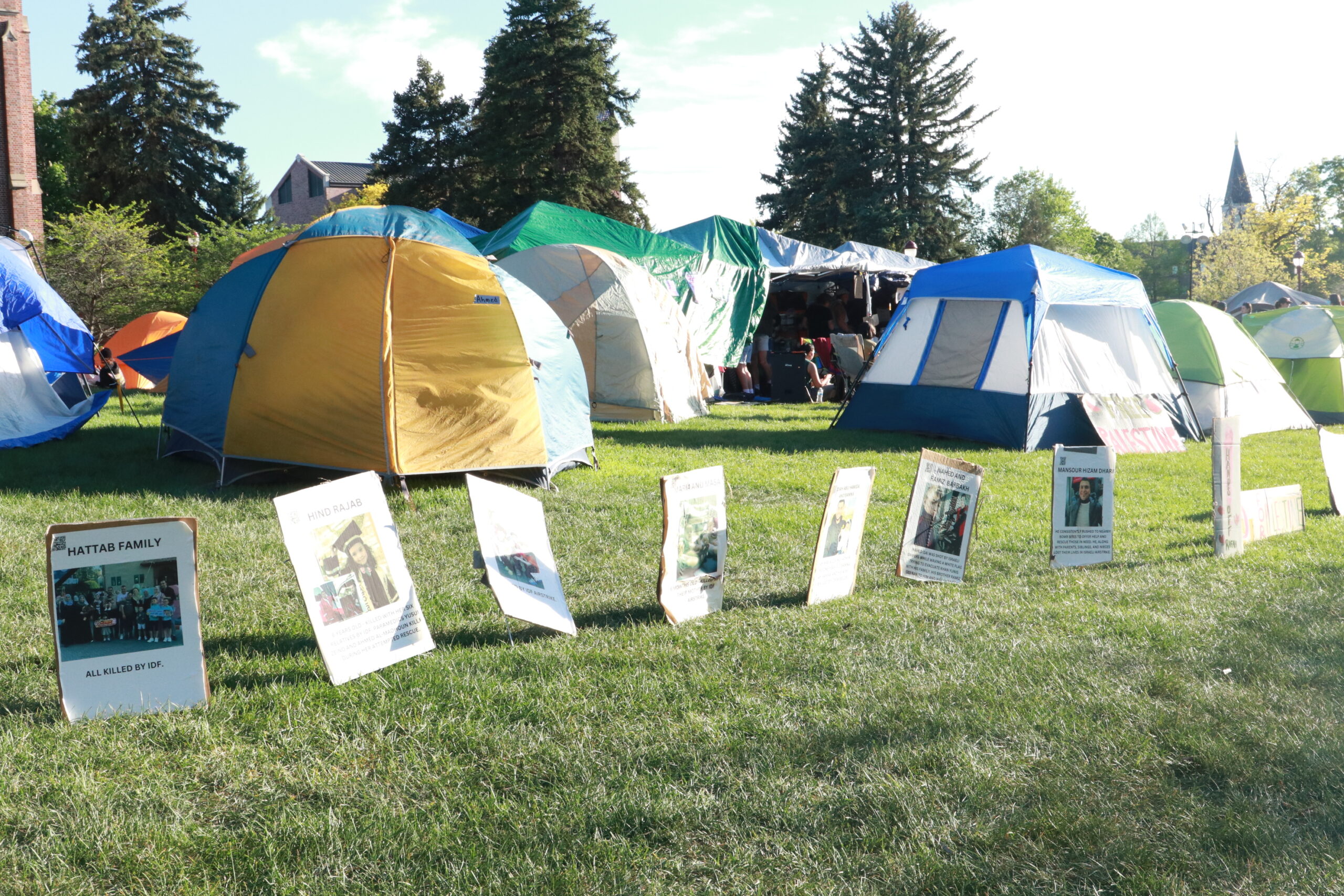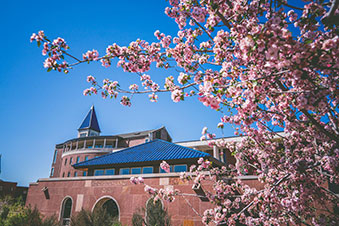 Photo by: Dillon Doyle
Photo by: Dillon Doyle
Dozens of freshmen woke up Saturday to a dismaying sight of hundreds of dying goldfish lying in the gutter on Iliff and High streets.
It took two hours before some 15 students came to the rescue and saved more than 100 fish that are now resuscitated. Some of the fish are swimming in a large tank in the lobby of Johnson-McFarlane Residence Hall.
“I was in shock,” said sophomore Nick Smith, a resident assistant. “It was a little alarming at first, we think they came from the Koi pond.”
The ponds in the Humanities Garden, on the west side of the Mary Reed building, were recently drained for the winter.
The fish, mostly goldfish, were discarded by DU maintenance workers.
A worker in the department of Facilities Management said he was unsure how many fish went down the drain, but estimated the total in the water ponds was around 800.
“Those fish aren’t cheap, so no matter your views on animal rights, that is a lot of money literally going down the drain every year,” said junior Dillon Doyle, a Johnson-McFarlane resident assistant. “It is sad that we have to throw so many of the fish away.”
It was about 10 a.m. when the first students organized to save the fish trapped in water less than 5 inches deep. By noon, the resident assistants filled two large buckets from Home Depot and a fish tank.
Once the students placed the fish in the tank, they bought a filter and fish food to sustain the fish.
“The students care,” Doyle said. “It is great to see a huge group of students coming together to save the fish.”
Twelve fish are now in a tank at the front desk of Johnson-McFarlane.
The students called Facilities and the on-call administrator who came and took nearly 70 fish, Smith said. The rest were distributed among students.
Then they named them. Names included Fernando, Carlos Santana, Mac-Gill, Danger Dan, Armes, Carrot Top and Michael Jackson.
“My guess is they came through the drain,” said Brett Ericson, grounds foreman. Arborist Marc Hathaway, who is in charge of the fish, was unable for comment because he is away on a scheduled vacation break.
“I know they have a net over it (pond). I’m sure there were efforts, I know they recovered the majority,” Ericson said. “As the ponds drain they try to grab as many as they can.”
When the seasons change, many of the fish are moved to the upper ponds on the west wall of Mary Reed, Ericson said.
“I think it is madness. We need to find out where they came from,” Smith said. “I was in shock that that many slipped through. There were tons of them and the water that they were in was absolutely disgusting. We just want to make sure that they’ll be OK and live.”
In the spring, DU begins with 20 to 30 fish in the ponds, which reportedly reproduce hundredfold during the warm weather.
“They produce really rapidly,” Ericson said.
The university stocks the Humanities Garden with only goldfish, but during the season, Koi, a type of goldfish, usually appear. It may be that students or passersby add their pet fish to the DU pond, Ericson said.
“To me, the fish are somewhat symbolic of traditions at our school in the sense that instead of throwing them out we could be saving them and growing them every year,” Doyle said.










